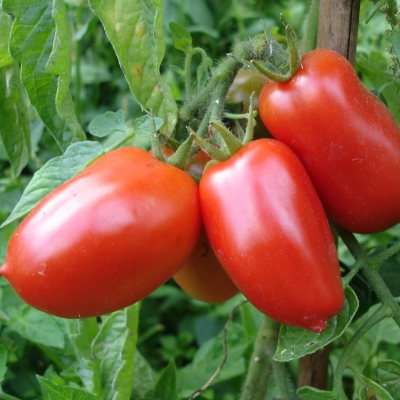
- Authors: Siberian selection
- Category: grade
- Growth type: determinant
- Appointment: universal
- Ripening period: mid-early
- Ripening time, days: 95-100
- Growing conditions: for open ground, for film greenhouses, for greenhouses
- Bush height, cm: 100-150
- Bush characteristic: compact
- Foliage: medium
The unpretentious variety Dusya red attracted gardeners, since the minimum care allows you to collect a decent harvest of delicious tomatoes, which will be used both for salad and for harvesting. It differs in that even with not very favorable weather factors, fruit set occurs. In addition, this is a variety, not a hybrid, therefore, you can harvest your own seeds yourself.
Breeding history
Dusya Krasnaya is a relatively new variety of Siberian selection. The culture was created on the basis of both the most frost-resistant and soil varieties of tomatoes. The variety is recommended for cultivation in almost all regions of the Russian Federation - for greenhouses, temporary shelters, as well as for open beds. Differs in excellent adaptation characteristics to various climatic zones of the Russian Federation.
Description of the variety
The tomato bush belongs to the determinant type, therefore it is distinguished by its compact dimensions, which also attracts gardeners. However, the height of the plant will greatly depend on the growing conditions, it ranges from 70 centimeters to one and a half meters. At the same time, the leafiness is average, the leaves are tomato-like, carved, the shade is dark green. The first inflorescences are formed between 7 and 9 leaves, then they appear every 2-3 leaves. Each brush ripens 6 neat proportionate berries.
The main qualities of the fruit
The berries of tomatoes Dusya red are all calibrated, have a beautiful oval-plum shape. The sizes are average, the weight of each tomato ranges from 150 to 200 grams, but the very first ones on the bush will be a little more - up to 350 g. The color of the strong skin is bright red, which is reflected in the name of the variety. At the same time, the fruits are fleshy, the seed chambers are small, there are also few seeds.
Taste characteristics
The taste of both fruits and any processed culinary product is noted as excellent. The flesh of the berries is dense, fleshy. Tomatoes are eaten fresh. They are also great for home canning due to their size and perfect shape.
Ripening and fruiting
Dusya red is a medium early tomato variety. It will take from 95 to 100 days to ripen.
Yield
In numerous reviews of the culture, its high yield is noted. However, no specific figures are given, probably because they are different everywhere and will differ depending on the region of cultivation.
The timing of planting seedlings and planting in the ground
In order to grow seedlings, they should be sown 60-70 days before planting in open ground or a greenhouse, that is, in a permanent place. And this is approximately the beginning or the middle of March. The temperature required for good germination of seeds should be 23-25 ° C warm.

Growing tomato seedlings is an extremely important process, because it largely depends on whether the gardener will be able to harvest at all. All aspects must be taken into account, from seedbed preparation to planting in the ground.
Landing scheme
The optimal scheme for planting tomato seedlings Dusya red in the ground is 3-4 bushes on an area of 1 square meter.

Growing and care
Seedlings are grown in the traditional way. The soil with the planted seeds should be tamped a little, covered with a layer of peat 1-2 cm thick. Then everything is watered with water, it is important that it is warm. The plantings are covered with a thin film, placed in a warm and bright place. The temperature should be between +22 and +25 degrees.
Improvised greenhouses should be aired daily, and the substrate should be watered. Remove the film immediately after germination. To prevent the seedlings from pulling out, experts recommend reducing the temperature to about 15-17 degrees for 1 week, and then raising it to a level of 21-24 degrees. It is necessary to dive the seedlings when it reaches the cotyledon phase, and after 60-70 days it is already possible to plant future tomatoes in a permanent place.
The use of specially developed growth stimulants will help speed up the germination of seeds, improve planting, and improve fruit set. The Dusya red variety responds well to watering, as well as fertilizing with complex mineral fertilizers. The culture is grown in 1 or 2 stems, and a garter to the support is also needed.
Recommended soil composition for growing tomatoes:
- 1 part compost;
- 1 part sand;
- 1 part of nutritious forest soil.
In general, it is not difficult to grow a Dusya red tomato. Care consists of watering, fertilizing, loosening and weeding.




A plant needs different micronutrients at each stage of growth. All fertilizers can be divided into two groups: mineral and organic. Folk remedies are often used: iodine, yeast, bird droppings, eggshells.
It is important to observe the rate and period of feeding. This also applies to folk remedies and organic fertilizers.



























































































